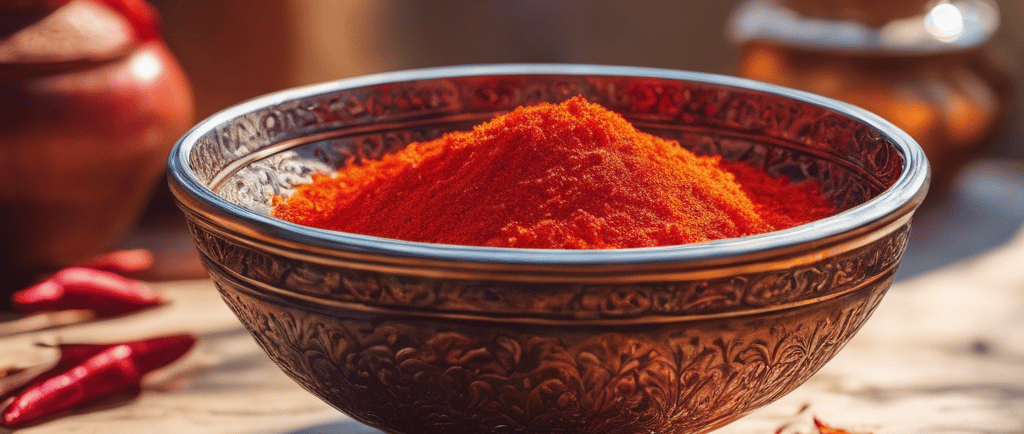Take advantage of discounts on our products!
Saffron: Health Benefits & Nutritional Value
Discover the extraordinary health benefits of saffron, one of the world's most precious spices. Learn about its rich nutritional profile, low calorie count, and potential to boost mood and support digestion, making it a valuable addition to your diet.
Holistic Care
11/10/2024


Introduction to Saffron Spice
Saffron, known as the "king of spices," is a highly prized and versatile spice that has been cherished for centuries for its distinct flavor, vibrant color, and potential health benefits. In this comprehensive guide, we will delve into the nutritional profile of saffron, exploring its key nutrients, health-promoting properties, culinary uses, and traditional medicinal applications. Join us on a journey to unravel the mysteries and wonders of saffron spice, from its rich history and cultivation to practical tips for incorporating it into your daily life.
Saffron spice, often referred to as the "king of spices," is known for its vibrant color, distinct flavor, and unique aroma. This precious spice is derived from the Crocus sativus flower and has been treasured for centuries for its culinary, medicinal, and even cosmetic properties.
History and Cultivation
Saffron has a rich history that dates back thousands of years, with origins in ancient Greece and the Middle East. It was highly prized by royalty and nobility for its luxurious qualities and was even used as a form of currency in some cultures. Today, saffron is primarily cultivated in countries like Iran, India, and Spain, where the delicate threads are handpicked during the flowering season.
Unique Characteristics of Saffron
What sets saffron apart from other spices is its labor-intensive harvesting process. Each saffron crocus flower produces only three stigma threads, which are carefully handpicked and dried to create the saffron spice. This intricate process contributes to saffron's status as one of the most expensive spices in the world, but its undeniable flavor and aroma make it a coveted ingredient in various cuisines.
Nutritional Composition of Saffron
Saffron not only adds color and flavor to dishes but also offers a range of essential nutrients that can benefit overall health and well-being.
Key Nutrients in Saffron
Saffron is a good source of antioxidants, including crocin, safranal, and picrocrocin, which are responsible for its distinctive color, flavor, and aroma. These compounds have been linked to various health benefits, such as reducing oxidative stress and inflammation in the body.
Vitamins and Minerals Content
While saffron is primarily valued for its flavor and color, it also contains important vitamins and minerals, including vitamin C, potassium, and manganese. These nutrients play a vital role in supporting immune function, maintaining healthy blood pressure levels, and promoting overall well-being.
Health Benefits of Saffron
Beyond its culinary uses, saffron has been studied for its potential health benefits, thanks to its unique composition of bioactive compounds.
Antioxidant Properties
Saffron is rich in antioxidants that help protect cells from damage caused by free radicals, which are unstable molecules that can contribute to chronic diseases and aging. By incorporating saffron into your diet, you may help reduce oxidative stress and support overall health.
Potential Anti-Inflammatory Effects
Studies suggest that saffron may have anti-inflammatory properties, thanks to its bioactive compounds. Chronic inflammation is linked to various health conditions, such as heart disease and arthritis, so incorporating saffron into your meals could help mitigate inflammation and promote better health.
Culinary Uses and Applications
Saffron's unique flavor and vibrant color make it a versatile ingredient in a variety of dishes, both savory and sweet.
Traditional Dishes Featuring Saffron
Saffron is a key ingredient in many traditional dishes, such as Spanish paella, Persian saffron rice, and Indian biryani. Its distinct flavor adds depth and complexity to these dishes, making them stand out in terms of taste and presentation.
Creative Ways to Incorporate Saffron in Cooking
In addition to traditional recipes, saffron can be used in creative ways to enhance both savory and sweet dishes. Try infusing saffron into broths, sauces, or desserts for a unique and aromatic twist that will impress your taste buds and elevate your culinary creations.
Saffron's Role in Traditional Medicine
Saffron, known as the "sunshine spice," has a rich history in traditional medicine. From ancient Egyptian tombs to Greek mythology, saffron has been revered for its medicinal properties for centuries.
Historical Uses in Traditional Medicine
Saffron has been used in traditional medicine to treat a variety of ailments, from depression and anxiety to menstrual issues and digestive problems. Its anti-inflammatory and antioxidant properties have made it a popular remedy in cultures around the world.
Modern Research on Saffron's Health Benefits
Modern research has delved deeper into the health benefits of saffron. Studies have shown that saffron may have potential in improving mood disorders, reducing PMS symptoms, and even combating cancer cells. Its unique compounds, safranal and crocin, are believed to be responsible for many of its medicinal properties.
Tips for Buying and Storing Saffron
When it comes to saffron, quality matters. Here are some tips to ensure you're getting the best saffron experience possible.
Selecting High-Quality Saffron Threads
Look for saffron threads that are deep red in color with a slightly sweet aroma. Avoid powdery or pale threads, as these may be of lower quality. Opt for reputable brands or sources to guarantee authenticity.
Proper Storage Techniques to Preserve Freshness
To preserve the delicate flavor and aroma of saffron, store it in an airtight container away from light and heat. Keep it in a cool, dark place, such as a pantry or cupboard. Proper storage can help maintain saffron's potency for up to two years.
Potential Risks and Precautions
While saffron has numerous health benefits, it's essential to be aware of potential risks and exercise caution when using this potent spice.
Allergic Reactions and Side Effects
Some individuals may experience allergic reactions to saffron, leading to symptoms like itching, rashes, or difficulty breathing. In rare cases, excessive saffron consumption can lead to stomach issues or even poisoning. If you have a history of allergies, consult a healthcare provider before using saffron.
Safe Dosages and Usage Recommendations
To avoid adverse effects, stick to recommended saffron dosages. Typically, a pinch (about 20 mg) of saffron threads per day is considered safe for most adults. Pregnant women should consult a healthcare provider before using saffron due to its potential effects on pregnancy.
Conclusion and Future Research Areas
In conclusion, saffron's nutritional profile and medicinal properties make it a valuable addition to any diet. As research continues to uncover its health benefits, there is much to learn about the potential uses of this vibrant spice. Stay tuned for future studies exploring saffron's role in nutrition, health, and well-being.
The nutritional richness, health benefits, and cultural significance of saffron make it a valuable addition to any kitchen and wellness routine. Whether you use it to elevate your favorite dishes or harness its potential therapeutic properties, saffron continues to captivate and inspire with its unique qualities. As research in this field progresses, the future holds promising avenues for further exploration and understanding of the remarkable spice that is saffron.
Frequently Asked Questions (FAQ)
1. How can I distinguish high-quality saffron from lower-grade varieties?
To distinguish high-quality saffron from lower-grade varieties, there are several key factors to consider. First, examine the color of the saffron strands. High-quality saffron should have a deep red hue, as the vibrant color indicates a higher concentration of crocin, the pigment responsible for saffron's distinct coloring properties.
Next, observe the shape and structure of the strands. Authentic saffron consists of long, delicate threads that are slightly curled, while lower-grade varieties may be shorter, thicker, and often contain a mix of yellow or white parts, which are less potent and inferior in quality.
Another important aspect is the aroma. Real saffron emits a strong, rich, and slightly sweet fragrance, whereas lower-grade saffron may have a dull or less complex scent. To truly test the aroma, gently press the strands between your fingers to release the essential oils and enhance the scent.
Additionally, consider the taste. High-quality saffron should impart a warm, earthy flavor with a hint of sweetness. If the saffron tastes bitter or lacks richness, it may not be of good quality.
Finally, ensure you are purchasing saffron from a reputable source. Look for brands that provide information about their saffron's origin, purity, and handling, as transparent sourcing often correlates with higher quality. Always be wary of unusually low prices, as authentic saffron is labor-intensive to harvest and typically commands a higher price point. By following these guidelines, you can confidently select high-quality saffron that will enhance your culinary creations.
2. Are there any potential side effects or risks associated with consuming saffron?
Yes, while saffron is generally safe for most people when used in culinary amounts, there are potential side effects and risks associated with its consumption, particularly at higher doses. Some individuals may experience allergic reactions, which can manifest as skin rashes or respiratory issues. Moreover, consuming large quantities of saffron can lead to more severe side effects, such as nausea, vomiting, diarrhea, and dizziness.
In rare cases, extremely high doses may cause more significant health concerns, including toxicity and potentially serious effects like liver damage or central nervous system disturbances. Pregnant women are also advised to exercise caution, as large doses of saffron may stimulate uterine contractions and could increase the risk of miscarriage.
Additionally, individuals taking certain medications, especially those related to blood pressure or mood stabilization, should consult a healthcare professional before incorporating saffron into their diet, as it can interact with these medications. Overall, while saffron can offer various health benefits, moderation and awareness of individual sensitivities are key.
3. What are some creative ways to incorporate saffron into everyday cooking?
Saffron, with its vibrant color and unique flavor, can elevate everyday dishes in delightful ways. Here are some creative ideas to incorporate this exquisite spice into your cooking routine:
Saffron Rice :
Infuse your standard rice dishes by soaking a few strands of saffron in warm water or broth before cooking. This not only adds a beautiful golden hue but also enriches the flavor, making it a perfect base for stews or as a side dish.
Saffron-infused Soups :
Stir saffron into creamy soups, such as butternut squash or tomato bisque. The warming notes of saffron enhance the overall taste, providing a luxurious twist to a comforting meal.
Saffron Dressing :
Whisk together olive oil, lemon juice, honey, and a pinch of saffron to create a vibrant dressing for salads. This infusion brings a unique flavor profile that pairs well with roasted vegetables or mixed greens.
Saffron Pasta :
Add saffron threads to your pasta dough before rolling it out. The pasta will take on a lovely color and subtle flavor, making a stunning presentation with just a drizzle of olive oil and fresh herbs.
Saffron Muffins or Breads :
Incorporate saffron into sweet baking by adding it to muffin batters, bread, or pancakes. Its distinctive taste complements citrus and vanilla beautifully, giving your baked goods an exotic touch.
Saffron Ice Cream or Gelato :
Elevate desserts by infusing cream with saffron while making ice cream or gelato. The delicate floral notes provide an unexpected, yet delightful, flavor that can impress guests.
Saffron in Marinades :
Enhance marinades for meats or tofu by adding saffron along with garlic, herbs, and spices. The heat helps release its essential oils, ensuring your protein is tender and flavorful.
Saffron Oatmeal :
For a luxurious breakfast, stir saffron strands into your morning oatmeal. Pair it with nuts, fruits, and a drizzle of honey for a nutritious start to your day.
Saffron Smoothies :
Blend a pinch of saffron into your yogurt or smoothie recipes. Combine it with fruits like mango or banana for a unique taste that tinges your drink with a golden hue.
Saffron Vegetable Dishes :
Add saffron to sautéed or roasted vegetables. It pairs beautifully with seasonal produce like carrots, peas, and potatoes, enhancing the flavors and colors of your side dishes.
By thinking outside the box, you can seamlessly incorporate saffron into everyday cooking, making even the simplest meals feel special and indulgent. Enjoy experimenting with this precious spice in your culinary creations!






